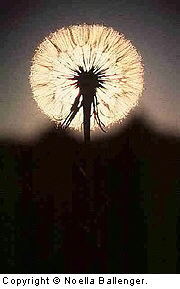
FIVE TIPS TO MAKE IT GREAT
STEADY YOUR CAMERA
When holding your camera by hand, learn to tighten your body position. Your stance should be relaxed but firm, your feet apart and elbows tucked next to your body. Your camera should be resting comfortably in the palm of one hand with the other hand ready to fire.
Or, try a tripod. They’re a must in low light situations. For flower photography, it’s best to get a tripod that allows you to get close to the ground without reversing the center post. A quick-release device on the tripod is recommended.
ADD SOME SPARKLE
Aluminum foil is basic camera gear. It makes a wonderful reflector and adds just a little light to the shadow side of a flower. Keep the basic exposure the same, but use the foil to create a touch of sparkle in the darker areas.
BE KIND TO LITTLE CRITTERS
Because flower photography involves interacting with bees, butterflies, and bugs, be comfortable in long pants and long-sleeved shirts. Never use cologne or perfumed sprays when going out in the field. (You want the bugs on the flowers and not on you!) Insect repellent is a must.
And, speaking of creepy-crawlies, they’re a part of what you’re shooting. Whenever possible, include them in the photograph. They make wonderful additions. But, keep in mind that you’re intruding in their home territory. Keep your impact on their lives to a minimum. Find more great tips on improving your flower photography
BE NICE TO YOURSELF
Lie on the ground to take a worm’s eye view, but treat yourself well and be comfortable. Tuck a large lawn trash bag into the pocket of your camera bag for just such occasions. In addition to protecting you from ground moisture, the trash bag can act as a windbreak when you fasten it to a low bush or some sticks using several clothespins.
LET IT RAIN
Water drops clinging to flowers make fascinating images. Go out into the field when the dew is on the flowers or at the end of a light rain. Be sure to include a diaper or lint-free cloth in your camera bag. It will absorb the water that gets on your equipment and dry out more quickly than other cloths.
Wipe down your equipment frequently when out in the field on a stormy day. You can use a plastic shower cap to cover your camera quickly between shots on a rainy day.
Nature is an explosion of riches. To see, appreciate, and capture these riches–especially Nature’s bounty of blossoms–with your camera is a challenge.
As with any kind of photography, good flower images begin with learning to see. This means really looking at what you’re going to shoot.
Examine your subject from the side and notice the curve of the stem, the balance of the blossom. Look at it from the top, and imagine you’re an insect coming in for a landing. Note the symmetry of the petals around the middle.
Peer even closer and notice how grains of pollen cling to the center, spilling haphazardly onto the petals. Study the flower from its underside, and discover the variations in color and texture. Look at the leaves, the veins, and the joining at the stem. As you develop the habit of careful observation, images will form in your mind. Your creative juices will start to flow, and that’s when the fun begins!
COMPOSE YOURSELF
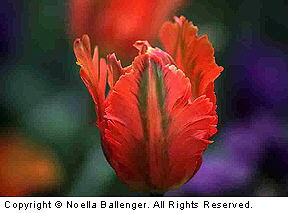
Composition is the arrangement of design elements within a photograph. Some of these elements include form, color, line, and space. Decide what is the most important element in the composition you’re considering. Is it the shape, the form, the texture, the pattern, or the arrangement of light and shadow?
There are many decisions you must make when choosing your central theme or subject. Carefully balancing the various components of your composition contributes to the overall harmony and pleasing appearance of the final product.
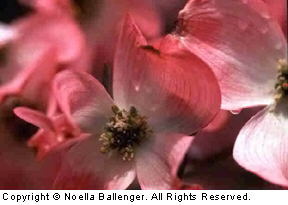
Learn to observe not only the subject of the photograph, but also everything that appears in the viewfinder of your camera. If you find something that’s not pleasing to your eye, disguise it or change your position to eliminate it from the viewfinder. Use clothespins and fishing line to hold unwanted material temporarily out of your way. (Be sure to put things back properly when you’re finished.)
USE THE TOOLS OF THE TRADE WELL
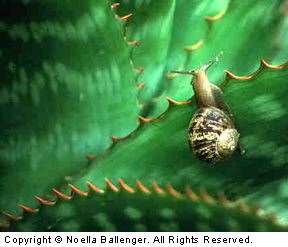
Many times, your choice of subject determines the composition and equipment you should use. Know your equipment well. Understand the function of each piece, and explore its full range of capabilities.
Most of us enjoy and use the versatile 35mm single lens reflex (SLR) with multiple lenses. With the advent of highly sophisticated through-the-lens metering systems, exposure has become easy. The ability to spot-meter a small section of a flower is also helpful. A depth-of-field preview button allows you to decide how much of the image from foreground to background should be in focus.
Any lens can be used in flower photography, from the ultra-wide angle (20mm) to the super-telephotos (300-500mm).
Each lens offers its own distinctive image characteristic. Wide-angle lenses can distort a normal view to emphasize size, while the telephoto lens eliminates unwanted background distractions and isolates the subject. Macro lenses or lenses with a macro-mode enable you to get closer, so the image size on the sensor is larger.
For closer range magnification, a macro lens filter provides an inexpensive alternative.
These filters screw on the front of your lens and add slight magnification to the image. They’re available in a variety of strengths and frequently come in a set of three, which can be used alone or stacked together, depending on what magnification you desire. Be careful if you’re stacking lens filters to check the corners of your viewfinder for vignetting.
by Noella Ballenger

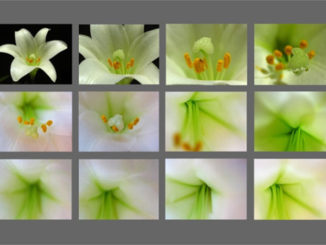
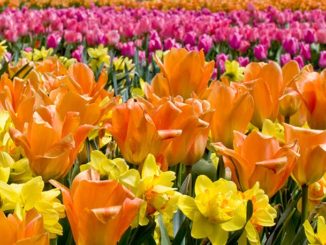
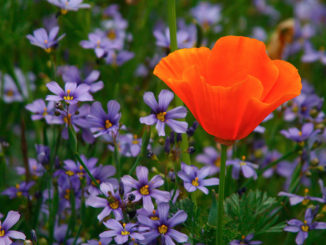
Leave a Reply